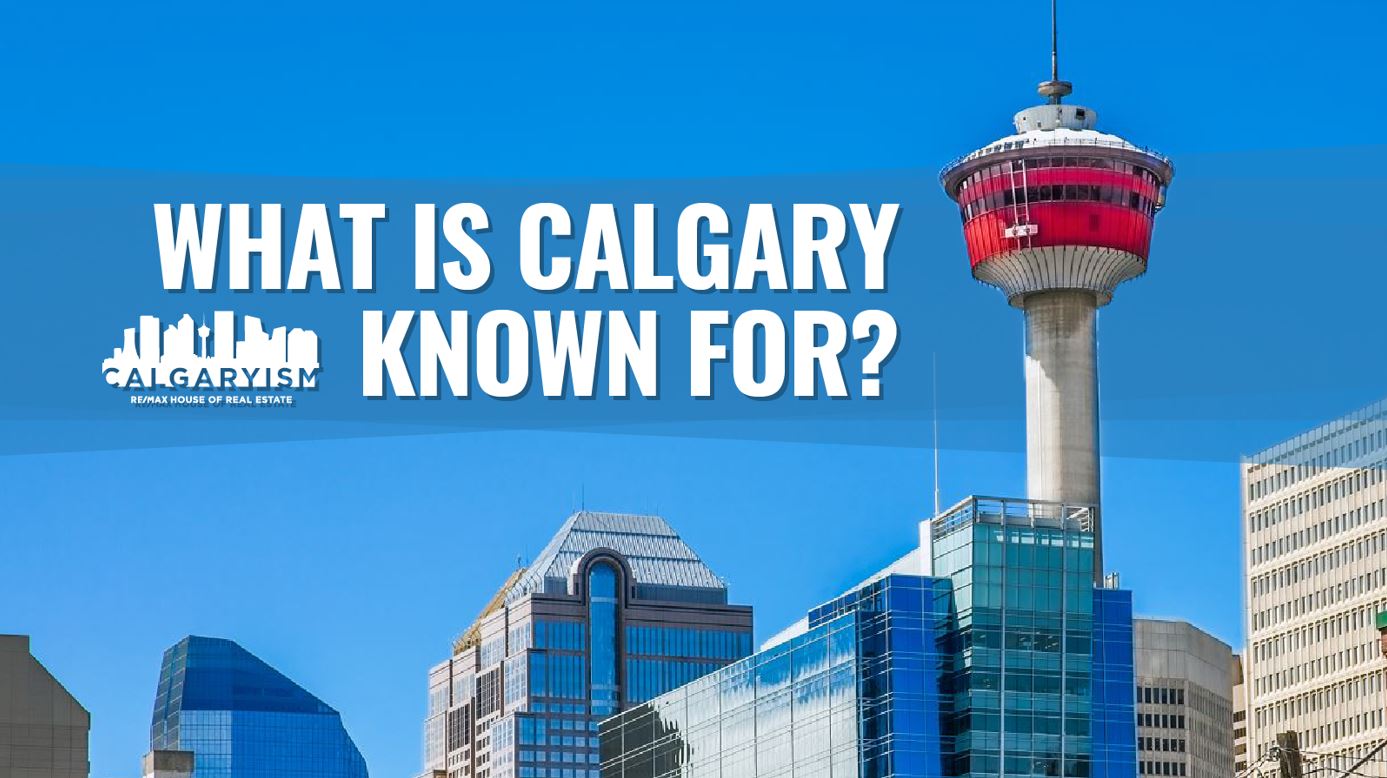What is Calgary Known For? 15 Reasons Why Calgary is Famous
- September 22, 2024
- By Cody Battershill
What is Calgary Famous For?
What is Calgary known for? Apart from being a distinctly Canadian city, not everyone is familiar with what Calgary is famous for. But as born-and-raised Calgarians, we're here to tell you.
Located within the province of Alberta, those familiar with the “Heart of the West” often think about the not-too-far-off Rocky Mountains, the 1988 Winter Olympic Games, or the Calgary Stampede, also known as the “Greatest Outdoor Show on Earth.”
But apart from these three reputation-gainers, there are a ton of other things Calgary is known for amongst the national and international community.
Below, we list the top 15 things that make Calgary special and what activities and events to look for while you’re here!
- Best Patios in Calgary
- Best Calgary Neighbourhoods for Families
- 20 Things to Do in Calgary on a Rainy Day
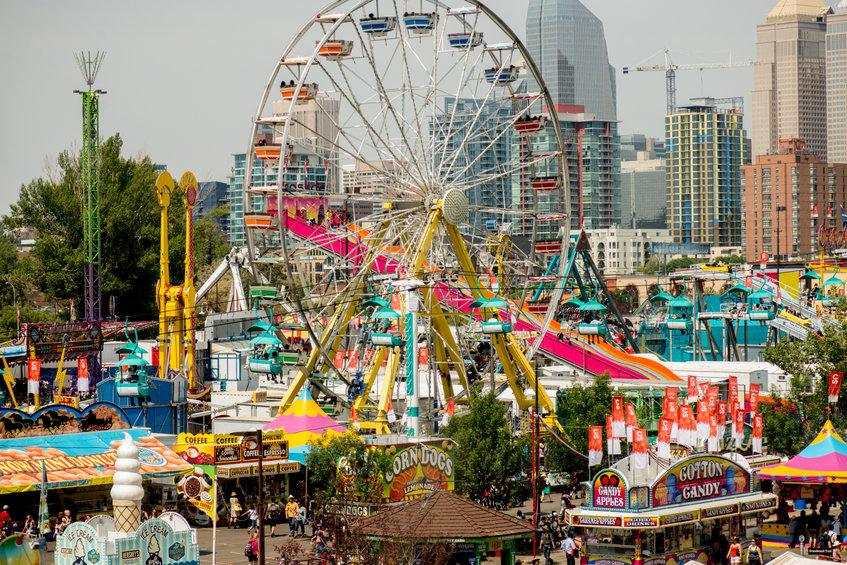
Calgary Stampede
Top 15 Things Calgary is Known For:
- Calgary Stampede - an annual event also known as the “Greatest Outdoor Show on Earth”
- Professional Sports - The most prominent of which are the Calgary Flames (NHL) and Stampeders (CFL)
- 88' Winter Olympics - Calgary was host of the 1988 Winter Olympic Games and today is a major training ground for Canadian Olympians, helping put our city on the international map
- Ginger Beef - Calgary is where the famous Western-style “ginger beef” dish originated from back in the 1970s, which is now enjoyed in restaurants across the West
- Ceaser Drink - The city is where the famous “Ceasar” alcoholic beverage was invented by Walter Chell back in 1969, which is now an iconic Canadian drink
- Rocky Mountains - Locals and visitors alike enjoy a short 45-minute drive west from outdoor leisure and recreation in various parks of the rolling foothills and Rocky Mountains
- National Parks - Residents have close proximity to Banff National Park, Canada's oldest national park established in 1885, known for its glaciers, forests, and alpine landscapes, as well as other reserves such as Kananaskis Country
- Pathway System - Calgary is home to an extensive 138-kilometre-long pathway system that is continually growing and is one of the largest in the world, serving to interconnect communities and locals with one another
- Bow and Elbow Rivers - The Bow and Elbow Rivers and downtown islands such as Prince’s Island Park and St. Patrick’s Island provide leisure and recreation to all and are an enjoyable feature of the city
- Canada's Energy Hub - Calgary is a hotspot for everything related to Canada’s energy sector including oil and natural gas, renewables, and new emerging technologies such as hydrogen and geothermal
- Best City in the World - Calgary has consistently been named one of the best cities in the world by the Economist Intelligence Unit (EIU)'s livability survey
- Stephen Avenue Walk - Eighth Avenue, also known as "Stephen Avenue," is Calgary's most walkable downtown streetscape where you'll find a vibrant and eclectic feel year-round and many restaurants and shops to enjoy
- Chinook Centre - Calgary's top mall, Chinook Centre is home to hundreds of stores, a V.I.P. cinema, a go-cart race track, and more
- +15 Walkway Network – The “skywalk” network in downtown allows Calgarians to walk between office towers without going out onto the street, something that is especially valued during the cold winter months
- Fort Calgary - The historical significance of Fort Calgary, established by the North West Mounted Police in 1875, which evolved into a key trade and agricultural hub
Calgary’s Rich History
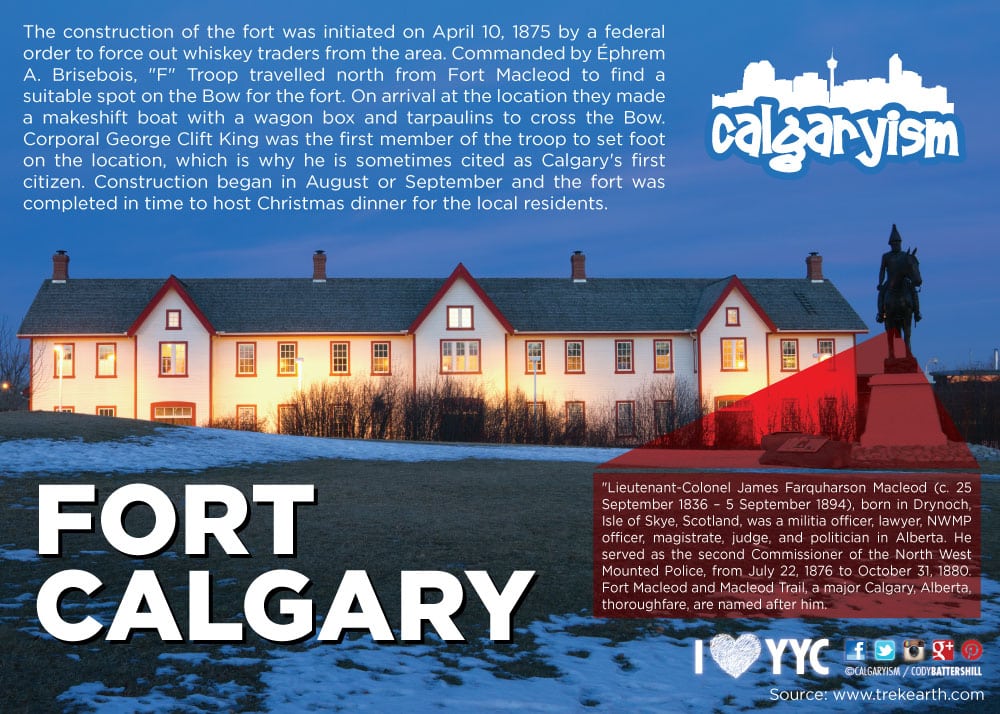
Calgary is well known for its rich history dating back hundreds of years.
The city’s modern history began with European fur trader exploration in the late 18th and early 19th centuries, becoming more prominent with the establishment of Fort Calgary by the North-West Mounted Police in 1875, which helped to secure the west for settlers and trade.
In 1883, the Canadian Pacific Railway (CPR) expanded to Calgary, marking a turning point for the city and transforming it into a key transportation and agricultural hub. Settlers used the railway to move further west, increasing settlement while also playing an instrumental role in economic growth for the region throughout the late 19th and 20th centuries.
The discovery of oil in Turner Valley in 1914 ignited another economic and population boom for the city, setting the stage for its future development. Further oil and gas discoveries in the 1940s and 1950s led to even more growth and expansion, with the city emerging as the nation’s energy capital.
Today, the energy industry's positive influence can still be seen today in the skyline, culture, and economy, making it a vibrant city that continues to be at the forefront of energy exploration and innovation.
Famous Historical Attractions in Calgary
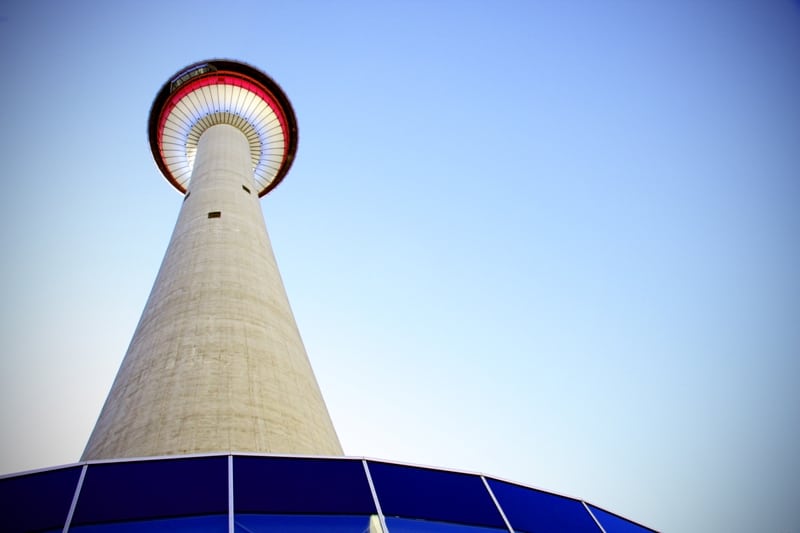
Calgary Tower
The City of Calgary is known for its several historical attractions by locals and tourists alike. These buildings will catch your eye with their classic look; many are protected today under the city’s Heritage Act.
As the third most diverse major city in Canada, Calgary boasts a rich multicultural landscape with over 120 languages spoken and more than 240 different ethnicities represented among its residents. Some of Calgary’s historical buildings include:
- Calgary Tower
- Lougheed House
- Calgary’s Old City Hall
- Calgary Fire Hall No. 1
- AE Cross House (Rouge Restaurant)
- Mary’s Parish Hall
- Memorial Park Library
- Fairmont Palliser Hotel
- Bank of Nova Scotia on Stephen Ave
- Bank of Montreal on Stephen Ave
- National Hotel
- Grain Exchange Building
- King Edward Hotel
Find almost all of Calgary’s historical buildings in the downtown business core, East Village, and the Beltline.
Calgary's Best Attractions
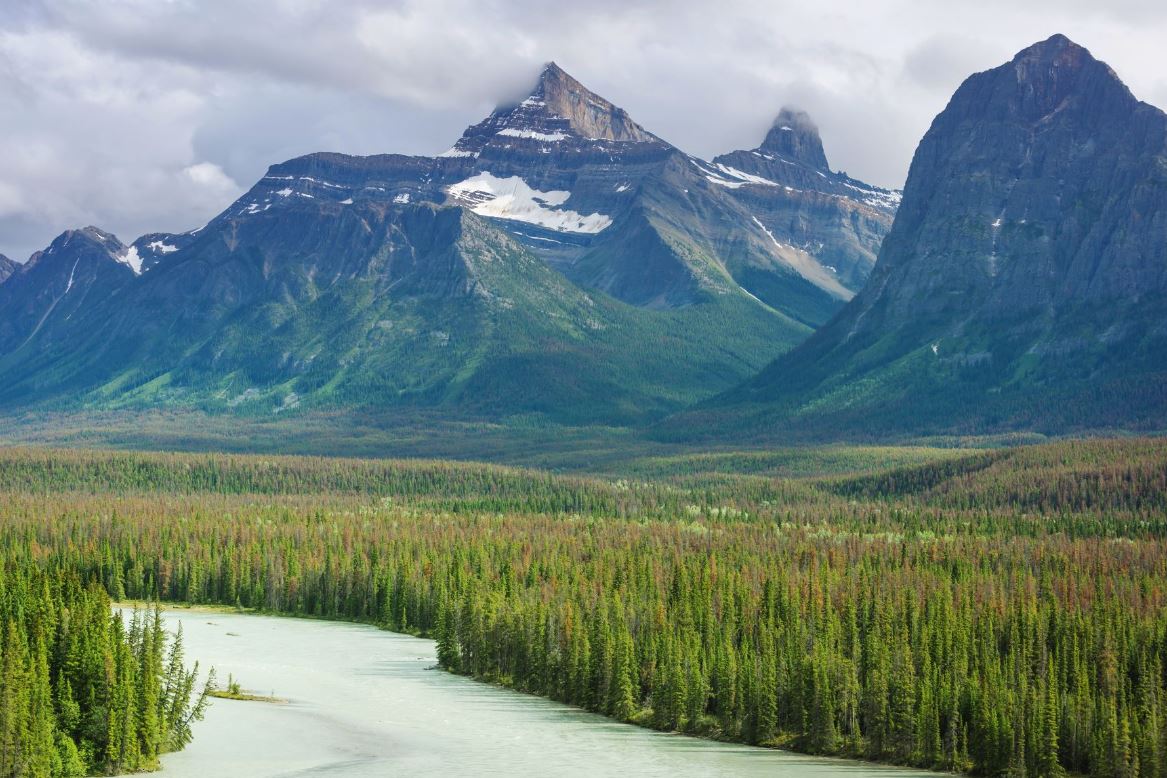
Rocky Mountains
Apart from the Foothills and Rocky Mountains, there are several activities and events happening annually that boost Calgary’s reputation as an exciting place to live and visit. Some of the best attractions to check out in Calgary:
- Patrick’s Island
- Prince’s Island Park
- Fish Creek Provincial Park
- Nose Hill Park
- Calgary Tower
- Glenbow Museum
- Stephen Avenue
- 17th Avenue SW
- Saddledome
- RiverWalk
- Chinatown
- Crescent Heights Plateau
- Telus SPARK
- Calgary Zoo
- Military Museums
- Winsport’s Canada Olympic Park
- Sikome Lake
- Chinook Mall
- CORE Shopping Mall
- CrossIron Mills
- New Horizon Mall
Calgary Stampede: A World-Famous Event
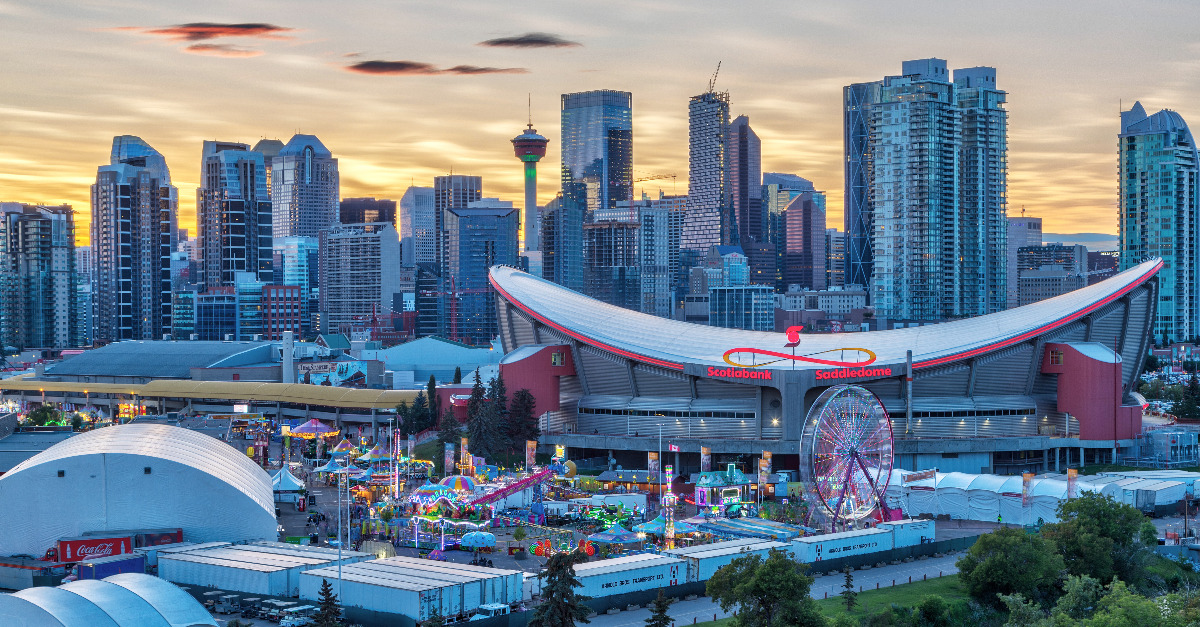
When you think of Calgary, the Stampede is likely one of the first things that comes to mind. Known as the “Greatest Outdoor Show on Earth,” this 10-day extravaganza celebrates Western Canadian culture and heritage, attracts millions of visitors each year, and is one of the major reasons why Calgary is famous.
The annual event is a thrilling mix of rodeo competitions, live music performances, mouth-watering food, and fascinating exhibits. Whether you’re a fan of bull riding, love artisan-style food and drink, or are just looking to soak in the festive atmosphere, the Stampede has fun activities and events for all ages. It’s a must-visit event that encapsulates the spirit of Calgary and its rich Western values and traditions.
Calgarians know that the Calgary Stampede brings an energy unlike any other time in the city. The event begins on the first Thursday of every July and lasts for ten days until the second Sunday, supercharging the city's streetscapes and providing an energy that lasts throughout summer.
Quality of Life in Calgary
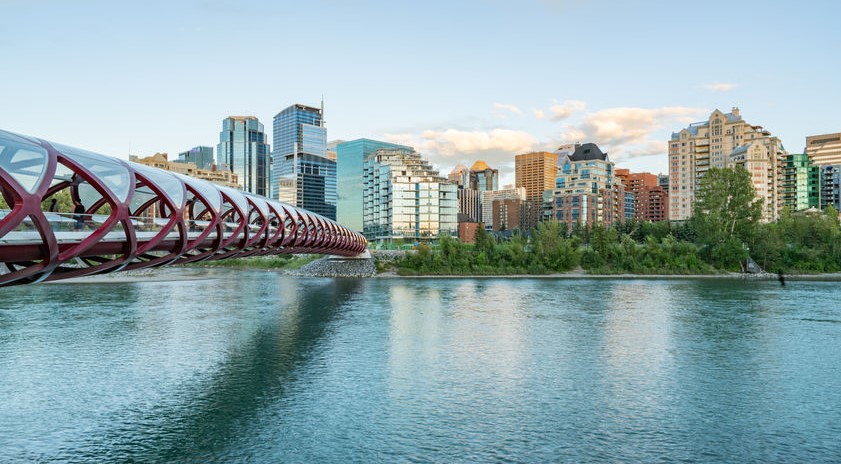
Downtown Eau Claire Community
Calgary is also known for being one of the top ten most liveable cities in the world. The Economist Intelligence Unit’s Liveability Survey has consistently ranked Calgary as one of the top ten most livable cities in the world from 2009 to 2023.
Calgary’s relatively strong economy, low crime rates, adept infrastructure, and social programs contribute to a generally high standard of living. A highly educated and diverse population also contributes to a high quality of life for locals; about 33 per cent of its population are visible minorities and roughly 30 per cent immigrants, according to the municipal government.
As one of Canada’s most ethnically diverse cities, Calgary is home to a wide range of annual festivals that showcase the best of various cultures, including food, dance, storytelling, and more. Some of the best Calgary festivals include:
- Lilac Festival – Single day in May
- High-Performance Rodeo – Late March to Late May
- Calgary Folk Music Festival – Four days in late July
- Beakerhead – Late September
- GlobalFest – Late August
- Calgary International Film Festival – Late September to Early October
- Circle Carnival - September
- Calgary Comic & Entertainment Expo – Late April
- Calgary International Beerfest – Early May
Foothills & Rocky Mountains
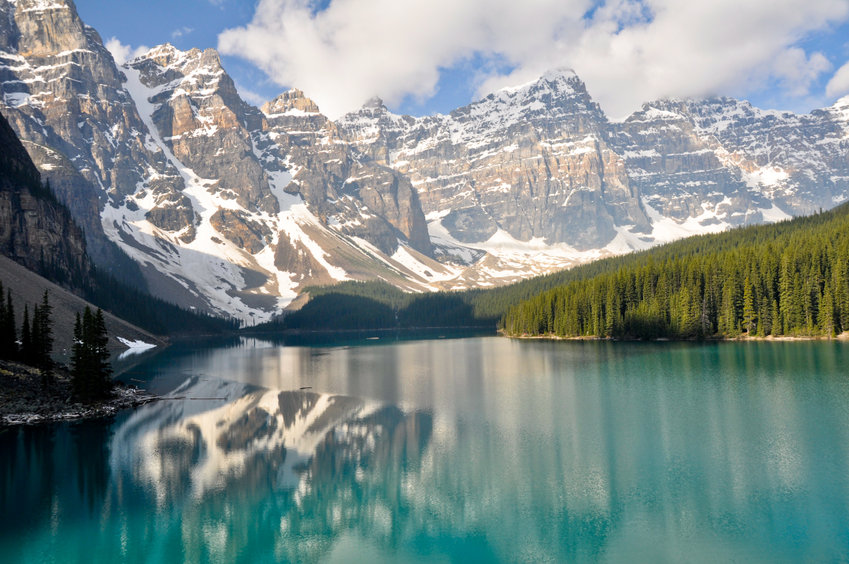
Moraine Lake
The city’s proximity to the beautiful foothills and the Rocky Mountains is at the top of the list of what Calgary is known for. Locals and tourists alike can reach beautiful mountain towns like Canmore and Banff within an hour or so and enjoy outdoor leisure and recreational activities any day of the week.
Banff National Park, the most visited national park in Canada, offers numerous attractions and stunning landscapes that draw millions of visitors annually. Furthermore, there are many other parks in the mountains to enjoy, such as Kananaskis Country, Kootenay National Park, Yoho National Park, and Peter Lougheed Provincial Park, to name a few.
Mountain lakes, waterfalls, and rivers near Calgary have breathtaking scenery and panoramic views perfect for a family picnic, or perhaps to get that next best snap for your social media account. Some mountain lakes found nearby Calgary include:
- Johnson Lake
- Barrier Lake
- Ghost Lake
- Lake Minnewanka
- Lake Louise
- Moraine Lake
- Grassi Lakes
- Quarry Lake
- Spray Lakes Reservoir
- Vermillion Lakes
- Kananaskis Lakes
- Rawson Lake
- Twin Lakes
- Elk Lakes
Parks and Pathways in Calgary
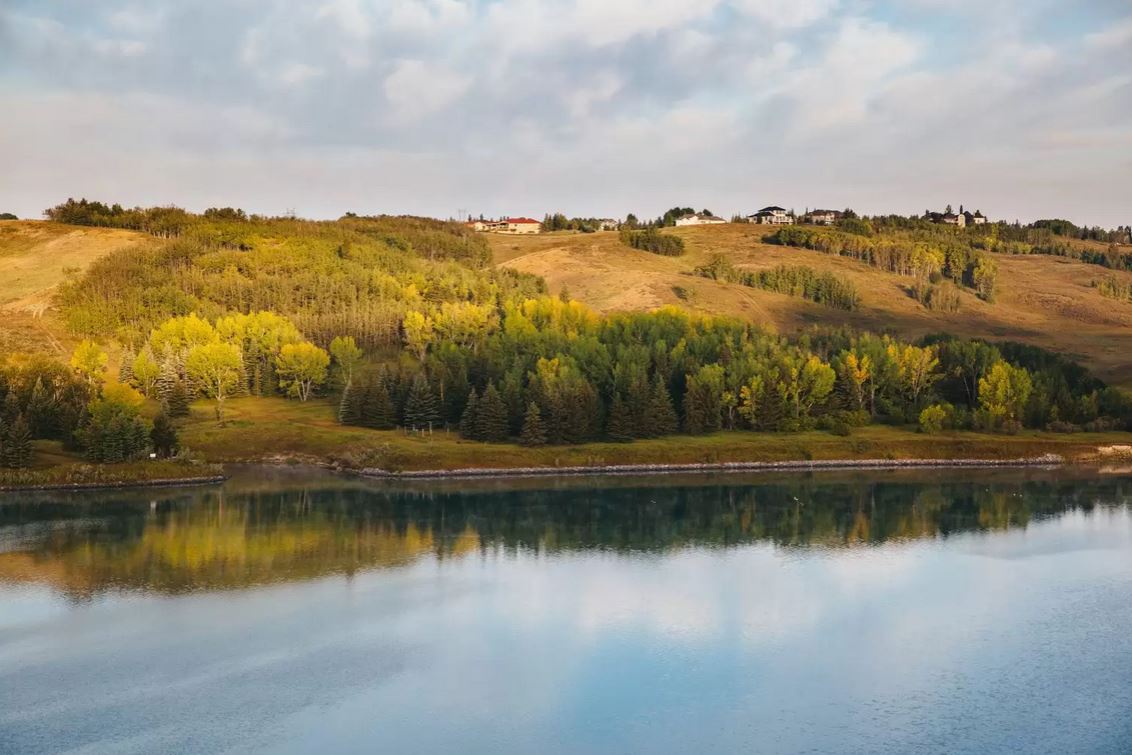
Rockland Park, NW Calgary
Calgarians value their city's natural beauty, boasting numerous parks and green spaces that offer a serene escape from urban life. Among the most popular are Fish Creek Provincial Park, Prince’s Island Park, and Nose Hill Park. These green spaces provide a plethora of activities, from hiking and biking to picnicking and wildlife watching.
Fish Creek Provincial Park, one of the largest urban parks in Canada, offers extensive trails and beautiful scenery; it is home to Sikome Lake, a family-friendly, shallow man-made lake open to the public during summer.
Prince’s Island Park is a favorite spot for festivals and outdoor events. Located in downtown Calgary, it is a popular retreat from the urban jungle of the city centre, and even has a riverside restaurant called River Cafe that serves up locally-inspired dishes.
Nose Hill Park, with its expansive views and natural prairie landscape, is perfect for reconnecting with nature. At the top, you'll find groves of trees amid pathways designed for leisure and recreation year-round.
Let's not forget about Calgary's paved pathway system. The city maintains more than 1,000 kilometres of regional pathways and 96 kilometres of trails. These interconnecting pathways run along the Bow and Elbow Rivers, serving to connect Calgarians to one another.
Calgary’s parks are integral to the city’s identity, offering residents and visitors alike a chance to enjoy the great outdoors.
Bow and Elbow Rivers
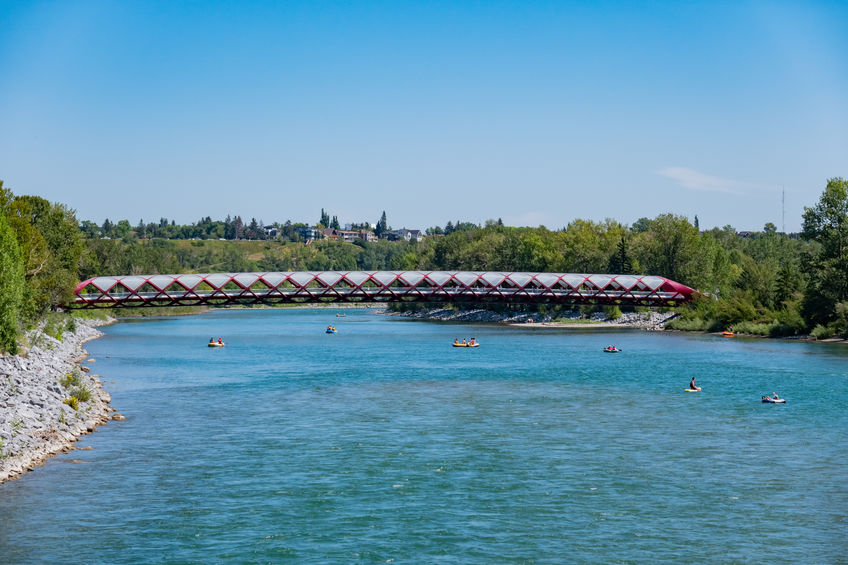
Peace Bridge & the Bow River
The Bow and Elbow Rivers are two other features Calgary is well known for, contributing to the city's reputation as a great place to live and visit. Summertime river activities include tubing, paddle boarding and canoeing, and will soon including surfing when the city builds its new river surfing park near downtown's west end.
Northwest Calgary parks like Bowness Park are a good place to hop onto the river, while downtown areas like Prince's Island Park and St. Patrick's Island are ideal spots to dock. Low-flow lagoons that have been carved out of these downtown locations make it easy to dock onto the river's embankments.
Harvie Passage, a new water park on the Bow River, is accessible through Pearce Estate Park in the community of Inglewood. During the summer, it is a top destination for families to enjoy water leisure.
The Elbow River is slower-flowing and better for tubers looking to relax while enjoying some sun. Stanley Park is a great starting point; the river flows north and merges into the Bow River, making St. Patrick's Island's lagoons ideal for boarding back onto land.
If you're interested in a half to a full day of activities along Calgary's rivers, check out:
Home of the “Caesar” Beverage
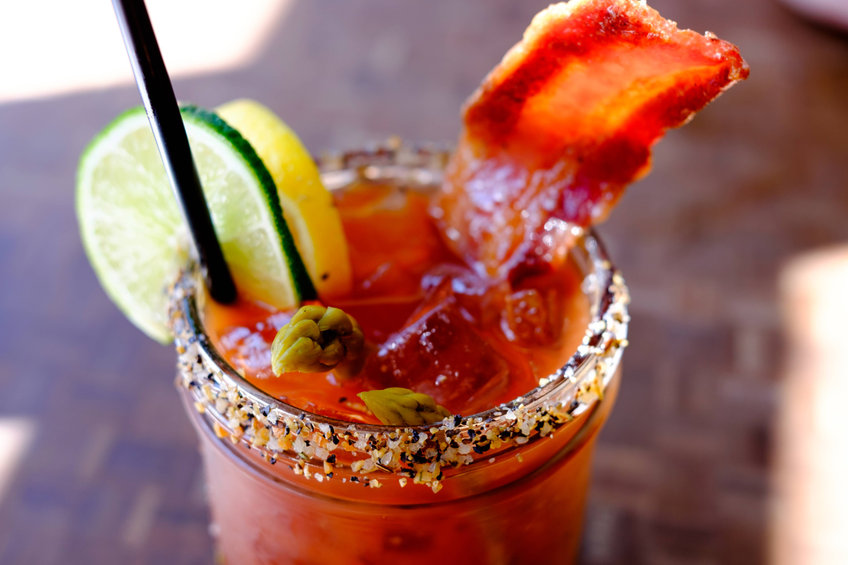
Bacon Caeser
Equivalent to America's “Bloody Mary” drink, Canada's “Caesar” beverage is today considered as the country's national cocktail. Key ingredients include vodka, clam juice, tomato juice, spices and Worcestershire sauce.
Walter Chell, a food and beverage worker in Calgary, created this delicious concoction in 1969. Since then, the drink's popularity has spread across the country and its origins have made the Caesar one of the most notable things Calgary is known for.
The Calgary Inn asked Chell to create a cocktail to celebrate the grand opening of Marco's, a new Italian restaurant. According to sources, Chell spent much of his time crafting the drink, and after three months of trials and tribulations, he created the perfect blend.
Today, the Caeser cocktail stands as a national icon, celebrated every May on National Caeser Day where many restaurants offer several different versions of the drink to celebrate its Canadian heritage.
Home of the “Ginger Beef” Dish
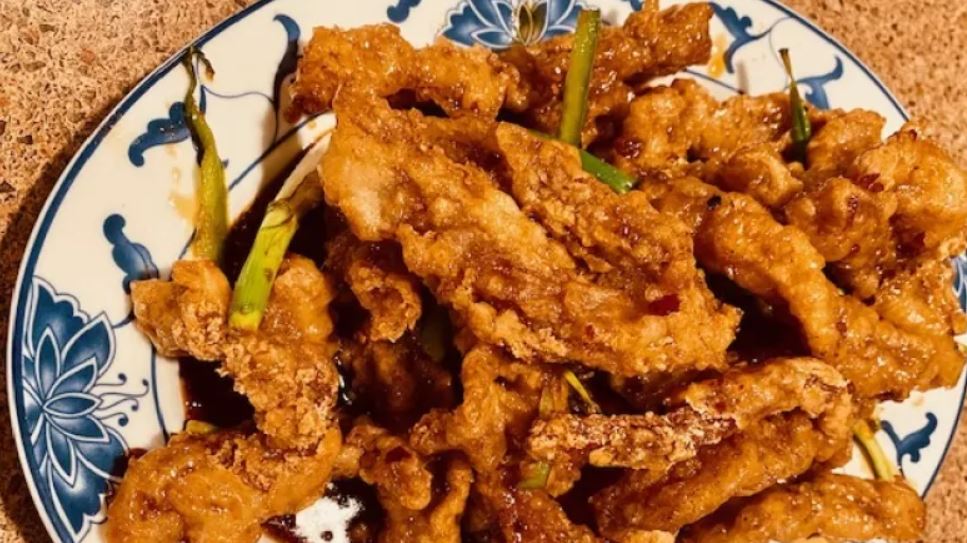
Ginger Beef - Elizabeth Carson
Ginger beef is another food and drink item originating from Calgary. It is said that George Wong, a chef from northern China, invented the dish at the Silver Inn Restaurant in the Chinatown area of downtown in the 1970s.
In 1975, sisters Louise Tsang and Lily Wong opened a restaurant that served Chinese Canadian food. To boost sales, the family thought of adding smaller, snack-like dishes to the menu to be eaten alongside alcoholic beverages. After several attempts at creating ginger beef, Lily and her husband George finally aced the recipe.
Today, ginger beef is a main entrée featured at Chinese and Western-Asian restaurants across Canada. Due to its popularity, authentic Chinese restaurants have also adopted the dish onto the menu.
Calgary Fire of 1886
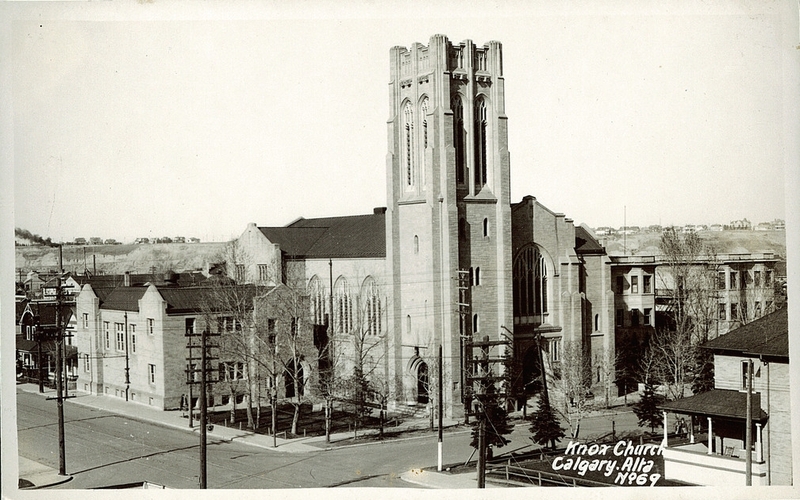
Knoxville Church - Glenbow Museum
Over 100 years ago, Calgary was overwhelmed by a massive fire that destroyed several wooden buildings in the downtown area. As a result, city officials began quarrying sandstone from the embankments of the Bow River to use as a fire-retardant construction material in new city projects.
Today, you'll see several sandstone structures in the City Centre area. Mostly schools and now designated heritage buildings, these tan-coloured bricked buildings remind us all of the infamous fire of 1886 that destroyed a good chunk of the city. Learn more:
What Else Is Calgary Known For?
Family-oriented communities, reasonably priced homes (compared to Toronto, Vancouver, etc), and a good old time all around. Come to Calgary and experience the best that our city has to offer by staying in a walkable area such as downtown, Kensington or perhaps the Beltline, and we promise you’ll have a blast!
More Calgary Links:




